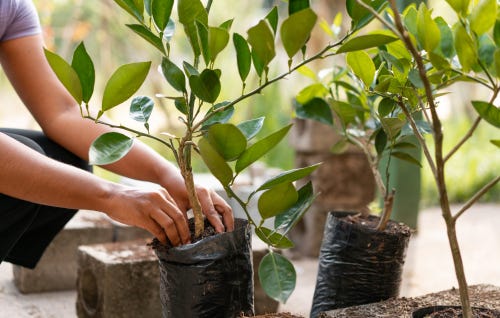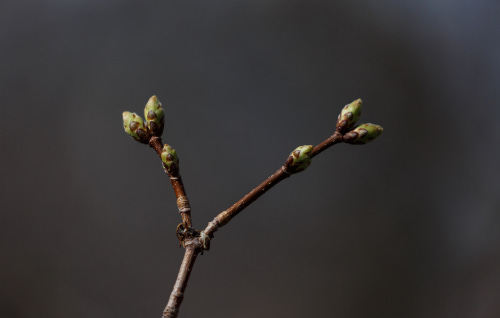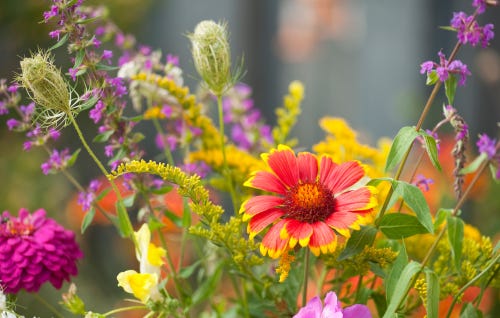You’ve probably heard that fall is the best time to plant trees, but did you know it’s also the perfect time to start a garden? Although we tend to think of spring as gardening season, this is an ideal window of time to start something new.
Take advantage of cool seasons
This is the perfect time to plant deciduous trees, shrubs, and perennials (the ones that drop their leaves). They’re not actively growing now—at least not above ground. But there’s a lot happening in the soil. Without the demands of photosynthesis or the need to prevent water loss through their leaves, plants channel their energy into their roots, expanding them deep into the soil and extending them in a broader circle.
If you plant now, even something that looks like a bare stick will grow steadily underground for the next couple of months. It will actively grow until the ground freezes, pause during the coldest months, then pick up again when things thaw out in spring. If it doesn’t get cold enough for the ground to freeze where you live, these plants will stay busy all winter long. And by including lots of perennials, which come back year after year, you’re reducing the amount of gardening you’ll have to do in the future.
Take advantage of plant sales
This is the time when plant nurseries are clearing out what’s left of their stock, which means major discounts—often half off. That usually means you don’t get the guarantee of a replacement if your plant dies, so be sure you’re selecting ones that look healthy and care for them well.
Some plants may not look great at this stage, but you can tell they’re healthy by checking for leaf buds. Buds form as the plant prepares for winter, so it’s ready to go when temps warm up in spring. These will be along the main stems for trees and shrubs. Perennials usually die back to the ground, so dig around a bit to see if there are buds just under the soil’s surface. If the plant sports plenty of buds, it should survive just fine.
Select plants for people and wildlife
Do your best to choose plants that are native to your part of the world. These may not be the traditional plants people think of putting in a garden, but they’ll be much less work to maintain, because they’re well adapted to local conditions. They will also be better for wildlife, some of which have specific foods they need to survive (like monarchs and milkweed).
And don’t forget to leave the leaves! They make great mulch and provide important habitat for all kinds of critters.
No yard? No problem!
Even if you don’t have your own patch of land, your building probably has some green areas around it. Talk with your building manager about planting a garden in one small area. Maybe it’s a spot near an entrance that’s looked scraggly for a while. Or maybe it’s right outside your window, so you can enjoy the fruits of your labor. I know several people who have done this, and it benefits everyone—you, your neighbors, and wildlife.
If you like One Simple Thing, please forward to a friend who might be interested in taking steps toward a healthier plane







